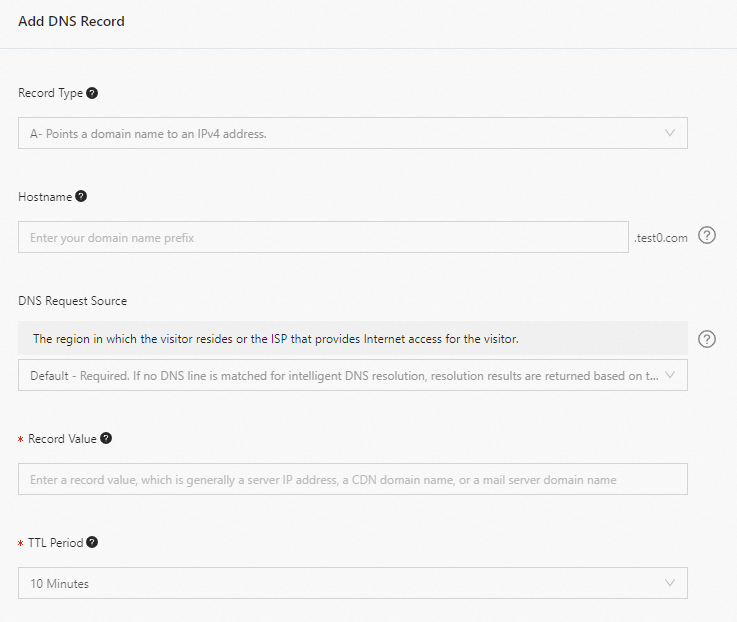After you add a domain name to Dynamic Content Delivery Network (DCDN), the system assigns a CNAME to the domain name. You must add a CNAME record in the system of your DNS service provider to map the domain name to the CNAME before requests can be redirected to points of presence (POPs). This enables content delivery acceleration, edge computing, and protection of web resources.
Background information
How it works
After you add a domain name to DCDN, the system assigns a CNAME to the domain name, which points to globally distributed POPs. Requests are forwarded to POPs. If the requested content is cached on the POPs, the content is returned. Otherwise, the POPs retrieve the content from the origin and cache it for subsequent requests. This way, DCDN accelerates content delivery and improves user experience. After you add a CNAME record for a domain name, make sure that the DNS record of the origin server points to the CNAME record provided by DCDN. This way, traffic to your website goes through POPs.
Domain name resolution
Domain name resolution is the process of converting a domain name, such as example.aliyundoc.com, into an IP address of the client. For more information, see What is DNS resolution?
Prerequisites
A domain name is added by following instructions in Add a domain name.
Step 1: Obtain the CNAME of the accelerated domain name
Go to the Domain Names page in the DCDN console and copy the CNAME of the accelerated domain name.
Step 2: Add a CNAME record
The procedure to add a CNAME record varies with your DNS service provider.
If your DNS service provider is Alibaba Cloud, see Add a CNAME record on Alibaba Cloud.
If your DNS service provider is Tencent Cloud, see Add a CNAME record on Tencent Cloud.
Make sure that the DNS records do not conflict with each other in the same system.
The server that DCDN uses for domain name resolution is deployed in the Chinese mainland. If you configure region-specific DNS settings for your domain name, for example, you add a CNAME record for your DCDN-accelerated domain name only in regions outside the Chinese mainland, including Hong Kong (China), Macao (China), and Taiwan (China), the domain name cannot be mapped to the CNAME. The CNAME status is Pending Configuration in the DCDN console. However, acceleration for the domain name is not affected.
CNAMEs that are assigned by Alibaba Cloud CDN, DCDN, ApsaraVideo Live, and ApsaraVideo VOD can be used only for domain name resolution. If Alibaba Cloud detects that your CNAME is used for unauthorized or malicious activities, Alibaba Cloud reserves the right to close your Alibaba Cloud account and remove the domain names.
Add a CNAME record on Tencent Cloud
Step 3: Verify that the CNAME record takes effect
Method 1: Use the DCDN console
Log on to the DCDN console and navigate to the Domain Names page.
Find the domain name and move the pointer over the CNAME Status column. If the CNAME status is Configured, the CNAME has taken effect.
Method 2: Run the nslookup command
Start Command Prompt in Windows or Terminal in macOS or Linux.
Run the nslookup -type=CNAME domainName command. If the CNAME in the output is the same as the CNAME that is assigned to the domain name in the DCDN console, DCDN acceleration takes effect for the domain name.

References
If the cache hit ratio is lower than expected after you use DCDN to accelerate content delivery for a domain name, you can configure and enable the prefetch feature. The prefetch feature allows DCDN to prefetch content from origin servers to DCDN POPs during off-peak hours. This increases the cache hit ratio. For more information, see Purge and prefetch resources.
